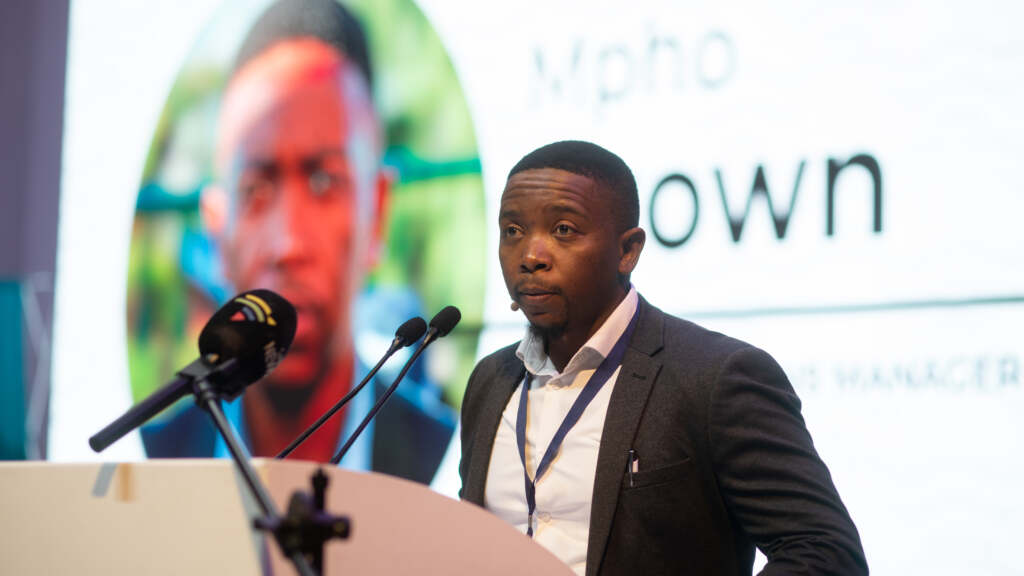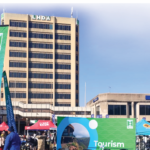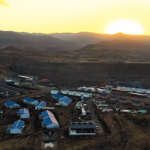Kananelo Boloetse
In March this year, the Lesotho Highlands Development Authority (LHDA) unveiled an ambitious Ten-Year Strategy that promises to redefine the organization’s position from a fiscus-dependent entity to a self-sustaining State-Owned Enterprise (SoE).
This strategy marks a pivotal shift, addressing the inherent risks that have previously threatened the LHDA’s ability to effectively deliver its mandate and its existence.
Central to this transformation is the strategic goal of conserving and restoring Lesotho’s ecosystems, an effort that could significantly alter the environmental landscape of the nation.
This strategic move came at a crucial time.
About three months after the LHDA unveiled this strategy, the world celebrated World Environment Day on June 5.
Led by the United Nations Environment Programme (UNEP) and held annually since 1973, World Environment Day is the largest global platform for environmental public outreach and is celebrated by millions of people across the world.
This year, the focus was on land restoration, halting desertification, and building drought resilience under the slogan “Our land. Our future. We are #GenerationRestoration.”
By aligning its goals with global environmental priorities, the LHDA is positioning itself as a leader in the fight against climate change and environmental degradation in Lesotho.
Historically, the LHDA has relied heavily on subvention funding, which has created financial bottlenecks, according to LHDA’s Chief Executive, Tente Tente.
Recognising the urgent need to realign with its foundational purpose, the LHDA’s new strategy seeks to enhance inclusive access to water and electricity, improve livelihoods, maximize economic opportunities, and uphold good corporate governance.
The goal of ecosystem conservation and restoration stands out as a critical pillar in the LHDA’s comprehensive plan.
Under this strategic goal, the LHDA has outlined a detailed programme to tackle environmental degradation. This includes “integrated catchment management”, “climate change adaptation”, and “wetlands rehabilitation”.
It has committed to protecting 70 percent of critical wetlands by 2034, with a target of 1,225 hectares of wetlands undergoing ecological rehabilitation.
Moreover, 43,496 hectares of land are set to be brought under formal protection, with an additional 1,225 hectares earmarked for ecological restoration.
“The integrated catchment management (ICM) programme of the LHDA is aligned with the national ReNOKA initiative, which focuses on stakeholder engagement and participation,” explained Palesa Monongoaha, LHDA’s Environment Branch Manager.
“This ensures that stakeholders at all levels are involved in the planning and implementation of all initiatives within the ICM. These initiatives include climate adaptation and mitigation, as well as the conservation, restoration, and rehabilitation of wetlands and rangelands,” Monongoaha added.
She further noted that LHDA was diversifying the livelihoods of communities within the LHWP catchments to reduce their dependency on natural resources and alleviate pressure on degraded rangelands and catchments.
Discussing the role local communities will play in implementing these environmental initiatives, Monongoaha emphasised that local labour was employed directly from the communities during rehabilitation measures.
“Upon completion, the same communities, who are the resource users, participate in assessing the rangelands and in the preparation and implementation of grazing plans based on the rangelands’ carrying capacities,” she explained.
She also highlighted that local structures were empowered to manage natural resources in their respective areas, with LHDA facilitating the formation and registration of Grazing Associations.
“The LHDA has always worked with communities to execute environmental initiatives. We believe that shared accountability and ownership is the right model when dealing with shared resources between communities and the Project and this working formula will not change,” she said.
The expected outcomes from this strategic goal of ecosystem conservation and restoration are substantial.
Improved ecosystem health will enhance land cover, flood attenuation, water quantity and quality, and biodiversity. Additionally, reduced sedimentation loads will benefit water resources, essential for both human consumption and agriculture.
Despite its ambitious plans, the LHDA acknowledges several strategic risks that could impede progress, which it has made, areas of priority to enable the achievement of the strategy.
These include prioritisation of stakeholder engagement, and building organisational culture that is aligned with the ambitions of the new strategy. An ineffective policy and legislation environment, as well as vulnerabilities to climate change, are also key risks to the strategy.
The LHDA’s strategic plan aligns with existing projects aimed at improving land use, promoting sustainability, and building a greener, more prosperous future for the nation.
Lesotho, a small, high-altitude kingdom, faces significant environmental challenges. Unsustainable land management and the pressures of a growing rural population have strained the limited arable land.
More than three-quarters of Lesotho’s approximately 2 million people live in rural areas, with 70 percent of households depending on agriculture for their livelihoods. This heavy reliance has led to overgrazing, over-cultivation, and damaging practices like rangeland burning.
Climate change exacerbates these issues, accelerating soil erosion, reducing water retention capacity, and increasing pest problems. Wetlands, crucial for water management, have been lost, further straining the landscape.
To combat these challenges, the Global Environment Facility (GEF) in 2021 announced financing for a new government initiative: the Lesotho Regeneration of Landscapes and Livelihoods (ROLL) project.
Supported by the International Fund for Agricultural Development (IFAD) and the OPEC Fund for International Development (OPEC Fund), this project aims to address unsustainable agricultural practices and climate change impacts at both community and landscape levels.
The ROLL project promotes an integrated landscape approach, focusing on sustainable land management and large-scale restoration of natural resources. By tackling rural poverty and environmental degradation together, the project aims to halt the downward spiral these issues create.
The initiative will also support the sustainable management of natural and productive lands, employing tools and methods to improve monitoring and measurement of biophysical and socioeconomic changes.
Additionally, it will encourage the sharing of lessons and successes among communities.
Stanley Damane, Lesotho’s Operational Focal Point to the GEF, said in 2021 that he expected the ROLL project would make a meaningful long-term difference in the country, where wool and mohair are important exports that are primarily produced by smallholder farmers.
“The ROLL project importantly builds on lessons learnt in natural resources management and restoration activities. Its focus on capacitating local communities and ensuring a shift in mindset for appreciation of the value of natural resources and integrated planning are key factors for success,” Damane said.
“The implementation approaches will be crucial to demonstrating multiple benefits for the different actors so communities will be able to continue with the regeneration activities after the project ends,” he added.
Monongoaha yesterday said that the LHDA collaborates with initiatives such as ROLL by sharing expertise and success stories.
To this end, the LHDA has participated in several meetings organised by ROLL, where experiences in implementing catchment rehabilitation measures were shared.
“The LHDA recognises the value of collaboration not only for sustainability but also for the opportunity to learn from others in the same space. We continue to engage and collaborate with like-minded organisations, government departments, and international partners in the execution of projects where we have similar interests,” she said.
“We welcome collaborations and the opportunities that emerge from synergies with experts, communities and stakeholders,” she added.
Summary
- In March this year, the Lesotho Highlands Development Authority (LHDA) unveiled an ambitious Ten-Year Strategy that promises to redefine the organization’s position from a fiscus-dependent entity to a self-sustaining State-Owned Enterprise (SoE).
- By aligning its goals with global environmental priorities, the LHDA is positioning itself as a leader in the fight against climate change and environmental degradation in Lesotho.
- “Upon completion, the same communities, who are the resource users, participate in assessing the rangelands and in the preparation and implementation of grazing plans based on the rangelands’ carrying capacities,” she explained.

Your Trusted Source for News and Insights in Lesotho!
At Newsday Media, we are passionate about delivering accurate, timely, and engaging news and multimedia content to our diverse audience. Founded with the vision of revolutionizing the media landscape in Lesotho, we have grown into a leading hybrid media company that blends traditional journalism with innovative digital platforms.








